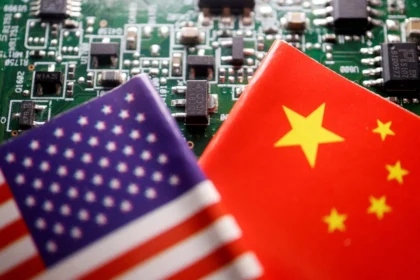When Apple unveiled its transition from Intel processors to its own Apple Silicon chips in 2020, the move was met with both awe and skepticism. The company promised enhanced performance, better energy efficiency, and longer battery life. Fast forward a few years, and that promise has been largely fulfilled. But as Apple’s M-series chips continue to raise the bar, it has become increasingly clear that not all products made the leap equally. Among the many casualties of this shift, the MacBook Air stands out—not because it disappeared, but because it lost its identity.
Once hailed as Apple’s most accessible and beloved laptop, the MacBook Air is now navigating an identity crisis in the post-Intel Mac era. What was once the crown jewel of lightness, affordability, and portability is now an oddly positioned device overshadowed by its siblings, especially the MacBook Pro and even the iPad Pro.
The Golden Days of the Intel MacBook Air
The MacBook Air was first introduced by Steve Jobs in 2008 in an unforgettable moment when he pulled the ultra-slim laptop out of a manila envelope. At the time, it was revolutionary—a marvel of engineering that redefined what laptops could look and feel like. It became the go-to machine for students, creatives, and mobile professionals who valued portability and elegance.
Through the Intel era, the MacBook Air consistently offered a delicate balance of performance and practicality. While not the most powerful in Apple’s lineup, it was good enough for everyday tasks and came at a more digestible price point. It struck the right chords for the average user—light, sleek, capable, and relatively affordable.
The Arrival of M-Series Chips: A Paradigm Shift
In November 2020, Apple’s M1 chip debuted in the MacBook Air, MacBook Pro, and Mac mini. The leap in performance was immediately apparent. The M1 chip outclassed its Intel predecessor in virtually every benchmark—speed, energy efficiency, thermal performance, and battery longevity. The MacBook Air became fanless, silent, and yet more powerful than many Intel-based MacBook Pros.
At first glance, this seemed like a win for the MacBook Air. Finally, it had the guts to match its looks. However, this shift also marked the beginning of the end of what made the Air special.
Power Parity: A Double-Edged Sword
By equipping both the Air and the Pro with the same M1 chip, Apple blurred the lines that once clearly separated the two devices. With near-identical performance, consumers began to question the need for a “lesser” MacBook when the Pro wasn’t much more expensive and offered additional features like active cooling, better displays, and extended battery life.
This pattern continued with the M2 chip. While the MacBook Air received the newer chip in a redesigned chassis with a slightly bigger screen and MagSafe charging, the MacBook Pro was also upgraded with the same processor, further closing any performance gap. For the first time, choosing a MacBook became more about features than raw power—and unfortunately for the Air, it didn’t have much else to offer.
The MacBook Air’s Fading Relevance
What once made the Air unique—its lightness, thinness, and value—has been diluted. It’s still light, but the difference is negligible when compared to the 14-inch MacBook Pro. It’s still thin, but the design language has evolved such that all Apple laptops now follow similar lines. It’s still relatively affordable, but the gap in pricing is narrow enough that most buyers are willing to spend a little more for the Pro’s extra perks.
Furthermore, Apple’s aggressive push of the iPad Pro into the productivity space adds another layer of competition. With the introduction of Stage Manager, full external display support, and a desktop-class interface, many consumers—especially students and casual users—are considering the iPad Pro as a MacBook Air alternative. In some cases, the iPad Pro paired with the Magic Keyboard offers better portability, touchscreen functionality, and similar processing power.
The Pro’s Ascension
Meanwhile, the MacBook Pro has thrived. With the introduction of the M1 Pro, M1 Max, M2 Pro, and now M3 series chips, Apple has segmented the Pro lineup into tiers that cater to a wide range of professionals. The MacBook Pro is now a versatile workhorse, from entry-level content creators to high-end developers and engineers. It features better thermal design, larger and brighter displays with ProMotion, more ports, and superior battery life. The Pro has effectively absorbed the performance space that used to be out of reach for Apple laptops, and it has done so with polish.
What Comes Next?
The MacBook Air may not disappear anytime soon—it’s still a bestseller due to its lower price point and consumer appeal—but its place in the Apple ecosystem feels more symbolic than strategic. It represents a transitional product, one that held immense relevance during the Intel years but now struggles to define its purpose in a world of homogenized Apple laptops.
Apple faces a critical decision: either redefine the Air once again with a bold new vision—perhaps introducing a true budget version, experimenting with hybrid features, or revamping its form factor—or allow it to fade into quiet obsolescence.
The sun has set on the Intel Mac era, and in its place rises a new age of Apple Silicon. But in this dawn, the once-shining MacBook Air seems to cast a shadow rather than reflect the light.










